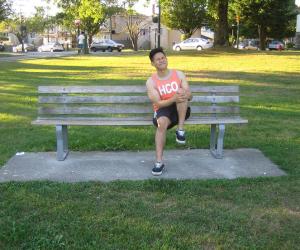A young adult or teenager who is physically active and engages in sports can oftentimes experience pain within the center and front of the knee, typically under the kneecap. This condition is called as adolescent anterior knee pain which is quite common among young athletes particularly girls.
Adolescent anterior knee pain is not typically triggered by a physical irregularity in the knee but overuse or training activity that lacks proper strengthening or stretching. In most circumstances, simple measures such as rest, strengthening exercises and over-the-counter medications can relieve the anterior knee pain as well as allowing the individual to resume his/her sport.
What are the causes?
In most cases, the actual cause of anterior knee pain might not be clear. The complicated structure of the knee joint which allows it to bend while supporting heavy loads is highly sensitive to small issues with the alignment, activities and overuse.
Weakened quadriceps muscles at the front of the thigh can lead to anterior knee pain. Once the knee bends and straightens, the quadriceps help keep the kneecap within the groove at the end of the femur.

What are the symptoms?
The usual symptom of anterior knee pain is the achy, dull pain that starts gradually and frequently related to activity. Other symptoms that can occur include the following:
- Pain at night
- Crackling or popping sounds in the knee when climbing stairs or standing up and walking after prolonged sitting
- Pain during activities that involve repeated knee bending
- Pain linked to a change in the activity level or intensity
Adolescent anterior knee pain will not cause swelling around the knee. The symptoms such as clicking, snapping, locking or giving away of the knee are also uncommon. Remember that these symptoms can indicate a mechanical issue in the knee and a doctor should be consulted.
Diagnosing anterior knee pain
It is important to note that the knee pain will not subside and can disrupt with daily activities, thus it is best to consult a doctor.
The doctor will examine the knee to check the exact cause of pain behind the kneecap and rule out other issues. The doctor will also check the alignment of the lower leg and position of the kneecap, tenderness, stability of the knee, hip rotation and range of motion of the knees, attachment of thigh muscles to the kneecap, tightness of the heel cord, flexibility of the feet as well as the strength, firmness, flexibility of the front thigh muscles. The imaging tests that will be carried out include an X-ray and MRI.
Treatment
There are measures that can help relieve the anterior knee pain. To learn to recognize and manage knee conditions and injuries, register for a first aid class with a credible provider near you.
It is recommended to adjust the activity level by avoiding activities that causes knee pain. The individual should switch to low-impact activities to minimize stress on the knee joint. If the individual is overweight, cutting down weight can help minimize the pressure on the knee.
